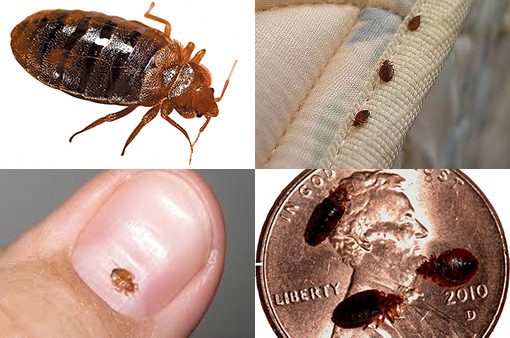Top A1 Bed Bug Treatment in Houston - Quick and Affordable
Top A1 Bed Bug Treatment in Houston - Quick and Affordable
Blog Article
Recognizing the Lifecycle of Insects for Targeted Control Approaches
Comprehending the lifecycle of parasites is a basic facet of efficient pest management techniques. By comprehending the various stages of growth that bugs undergo, a much more targeted and exact technique can be embraced to control their populaces. This understanding not only clarifies the susceptabilities within the insect lifecycle yet additionally leads the way for executing calculated actions that can disrupt their development and recreation cycles. With a deeper understanding of just how parasites flourish and develop, customized control strategies can be developed to address details factors in their lifecycle, eventually leading to more effective pest management results.
Importance of Understanding Parasite Lifecycle
Comprehending the lifecycle of bugs is essential for developing efficient and targeted control approaches in pest management. By understanding the different phases a pest goes with from egg to adult, insect control experts can recognize susceptible points in the lifecycle where intervention can be most effective.
Additionally, identifying the details ecological conditions required for each stage of the pest's lifecycle can guide decisions on habitat modification or exclusion approaches to disrupt the lifecycle and minimize parasite populations. This understanding allows pest monitoring specialists to apply aggressive measures as opposed to counting solely on responsive treatments, resulting in more long-lasting and lasting bug control remedies. Ultimately, a complete understanding of insect lifecycles equips insect control professionals to customize their strategies effectively, minimizing environmental effects and making the most of control outcomes.
Key Phases in Bug Advancement
To efficiently carry out targeted control techniques in insect monitoring, an important aspect lies in adequately determining and understanding the essential stages in insect development. Insect growth typically is composed of numerous crucial phases that are crucial for their lifecycle and monitoring.

Susceptabilities in Parasite Lifecycle
Throughout the different stages of a parasite's lifecycle, unique vulnerabilities emerge that can be strategically targeted for efficient control measures. One essential susceptability depends on the egg phase, where parasites are commonly a lot more susceptible to specific insecticides or biological control agents due to their soft outer covering, making them simpler targets for treatment. In addition, the larval or nymph phase presents vulnerabilities as pests undertake fast development and development, requiring high power consumption that can be manipulated by disrupting their food resources or presenting growth inhibitors. Pupal phases, characterized by immobility and makeover, use a home window for targeted control via physical obstacles or particular therapies that prevent successful introduction. Lastly, adult parasites, while extra resistant as a result of their reproductive capability, can still be vulnerable during mating or egg-laying tasks, which can be interfered with via pheromone catches or sanitation strategies. Understanding these susceptabilities in the pest lifecycle is vital for developing reliable and specific control techniques that effectively manage parasite populations while minimizing environmental effect.
Applying Targeted Control Steps

Executing targeted control actions normally entails a multi-faceted approach. This may consist of habitat adjustment to make the environment much less welcoming to insects, such as eliminating standing water for mosquito control or securing entry factors for rodents. sites Furthermore, organic control techniques can be utilized, where all-natural killers or virus are presented to maintain parasite populations in check.
Integrated Pest Management (IPM) view it strategies that integrate various control actions in a coordinated and lasting fashion are commonly the most reliable in accomplishing long-term parasite administration goals. By carrying out targeted control measures based on a thorough understanding of parasite lifecycles, bug populaces can be properly regulated while lessening risks to human health and the setting.
Improved Parasite Monitoring Practices

Moreover, the unification of organic control representatives, such as all-natural killers or virus of insects, can help in reducing reliance on chemical pesticides and promote an extra well balanced community. Applying physical barriers and catches can likewise be part of boosted insect management practices, offering safe and targeted options for insect control. In addition, the use of pheromones and various other semiochemicals can interfere with pest breeding patterns and communication, causing decreased pest populations with time.
Verdict
By identifying key phases in pest development and susceptabilities in their lifecycle, targeted control measures can be executed to reduce parasite populations. Enhanced insect monitoring methods can assist Homepage minimize the dependence on broad-spectrum pesticides and promote more lasting and environmentally pleasant pest control techniques.
Understanding the lifecycle of bugs is essential for establishing reliable and targeted control approaches in pest monitoring. By understanding the various phases an insect goes with from egg to grownup, bug control professionals can determine at risk factors in the lifecycle where treatment can be most effective. Inevitably, a comprehensive understanding of pest lifecycles encourages parasite control experts to customize their methods properly, minimizing ecological effects and making the most of control end results.
By applying targeted control steps based on a complete understanding of pest lifecycles, bug populaces can be effectively managed while decreasing risks to human health and the atmosphere.
By recognizing crucial stages in bug growth and vulnerabilities in their lifecycle, targeted control measures can be carried out to reduce insect populaces.
Report this page